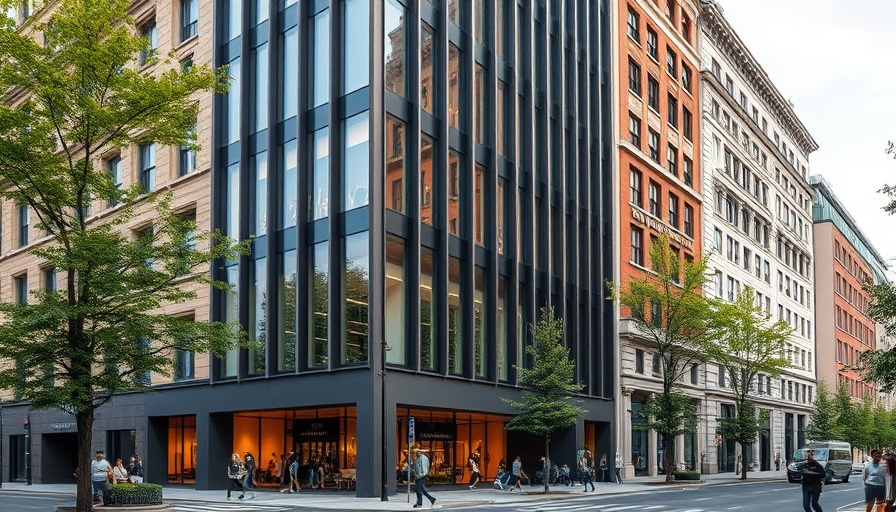
McLaren's £100m Redevelopment: A New Era for Sustainable Design
In a significant move for sustainability and architectural innovation, McLaren Construction has been awarded a £100m contract to transform the London School of Economics (LSE) flagship site at 35 Lincoln’s Inn Fields into the Firoz Lalji Global Hub. This ambitious retrofit aims not only to revitalize a 1950s building but also to set new standards in sustainable architecture with its focus on Passivhaus principles and circular economy practices.
Building Beyond Bricks and Mortar
The design, by esteemed architects David Chipperfield, retains approximately 60% of the original structure, showcasing a commitment to resource efficiency. By demolishing the top three floors and adding a lightweight cross-laminated timber extension, the total space will increase from 9,856 square meters to an impressive 11,848 square meters. This endeavour aligns with modern desires among London's young homeowners, who increasingly value eco-friendly renovations and retrofits over new builds.
A Cornerstone of Community and Education
More than just an architectural undertaking, the Firoz Lalji Global Hub will house cutting-edge educational facilities for the LSE, including the Institute for Africa, new classrooms, seminar rooms, and enhanced university amenities like a café and outdoor terrace. Young homeowners in London, who often see their homes as both functional and educational sanctuaries, will appreciate how this new hub aligns with their lifestyle aspirations of learning and community engagement.
Innovative Sustainability Standards at Play
The project strives for several prestigious certifications, including BREEAM Outstanding, Passivhaus, and WELL Platinum. These targets reflect an urgent trend in London towards buildings that not only minimize carbon footprints but also enhance inhabitants' health and well-being. Local property owners focusing on sustainability will find it motivating as it showcases the positive impact that renovations can have on community and environment.
Community Impact and Local Benefits
Julian Robinson, director of estates at LSE, emphasizes that this redevelopment is transformative, aiming to increase adaptability for future generations. Furthermore, the project has incorporated strategies to minimize embodied carbon, through methods such as salvaging materials for reuse, including flooring, lighting fixtures, and even bricks from nearby sites. Young, eco-conscious homeowners will resonate with these practices, enhancing their home's value while promoting a sustainable lifestyle.
Elevating the Aesthetic Amid Conservation
Situated in the Strand Conservation Area, the external appearance of the redeveloped building will maintain architectural integrity while refreshing the façade with a lime-based off-white wash. It's these subtle yet meaningful adaptations that reflect the balance between tradition and modern innovation—an ethos that resonates with many who cherish London’s character while seeking contemporary living standards.
Conclusion: Make Your Voice Heard
This redevelopment isn't merely about erecting a new building; it’s a beacon of how architectural foresight can support sustainability within our communities. Young homeowners can advocate for similar initiatives within their neighborhoods, suggesting practices and projects that respect both the environment and the rich tapestry of local heritage. By engaging in these discussions, you contribute to a future that aligns with sustainable living goals while reinforcing community bonds.
 Add Row
Add Row  Add
Add 




Write A Comment